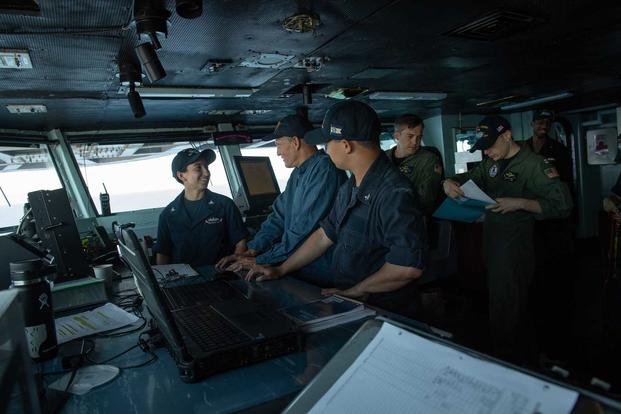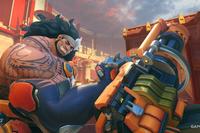PEARL HARBOR, Hawaii (NNS) -- This Veterans Day, moviegoers everywhere can witness the most pivotal Pacific battle in World War II: “Midway.” The production reminds viewers just how precariously America’s future teetered in the early 1940s, and what cost, sacrifice and luck was required to achieve a free and open Indo-Pacific.
Director Roland Emmerich (Independence Day, The Patriot, White House Down, Independence Day: Resurgence) waited ten years before embarking on the heroic story, written by Wes Tooke. The ambitious storyline begins in earnest in Asia the 1930s, and follows the war in the Pacific through the Midway battle that ultimately changed the tide of war.
The narrative chiefly follows the experiences of two principal characters: Lt. Cmdr. Edwin Layton (the U.S. Pacific Fleet Intelligence Officer) and Lt. Dick Best (naval aviator and commanding officer of Bombing Six squadron). As with the actual war, numerous other characters help the story take shape. Historic figures like Nimitz, Doolittle, Halsey, McClusky and others played critical roles in the war, and resultantly in the movie.
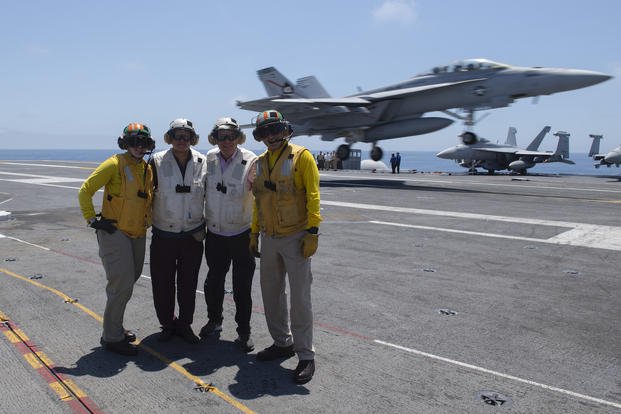
The movie timeline has a fever-pitch parade of battles from the attack on Pearl Harbor through the climactic fight at Midway a mere seven months later. Those portrayed are originally imperfect versions of themselves, who grow personally and professionally. Along the way they are confronted with unimaginable challenges and choices, often with historic consequences.
“I wanted to showcase the valor and immense courage of the men on both sides, and remain very sensitive to the human toll of the battles and war itself,” said Emmerich.
Hallowed Grounds

Just as the project was being “green lighted,” Emmerich visited historic Pearl Harbor in June 2016. While there, he saw first-hand the historic bases, facilities and memorials that remain some 75 years on. Home to the U.S. Pacific Fleet, Oahu was the target of the infamous Dec. 7 attack. The island also hosted the headquarters where much of the early Pacific war planning occurred and where information warfare professionals partially broke the Japanese code. Ultimately, this was the location from which Adm. Chester Nimitz made the decision to risk what remained of the Pacific Fleet in the gamble at Midway in June 1942.
Emmerich personally toured the waterfront, including Battleship Row and the harbor where much of the fleet was anchored that fateful Sunday morning. He went on to visit the Pacific Aviation Museum on Ford Island, which includes a dedicated Battle of Midway exhibit. His visit was curated by the facility's historian and author Mr. Burl Burlingame, who has since passed away. Burlingame provided rich accounts of the opening months of the war, including the attack on Pearl Harbor and the Battle of Midway. Emmerich also got a behind-the-scenes look in the historic aircraft hangar there.
The tour continued along Ford Island, which included stops at the original USS Arizona Memorial; a Navy seaplane ramp (with Pearl Harbor attack bomb and strafing scars); the Army seaplane ramps (also with strafing scars); and the USS Oklahoma and USS Utah Memorials.
Emmerich and his party then conducted windshield tours of the USS Missouri; the Pacific Fleet Headquarters compound at Makalapa – which included the historic Nimitz and Spruance homes; the temporary office space from which Adm. Kimmel watched the attack on Pearl Harbor unfold; and the famed Station HYPO, profiled throughout the movie Midway, where its operators broke enough of the Japanese code to enable the ambush at Midway.
The visitors were able to glimpse the Pearl Harbor Naval Shipyard and Dry Dock One. In the of Spring of 1942, a battered and bloodied USS Yorktown aircraft carrier limped back to Pearl Harbor following the Battle of Coral Sea. Despite extensive damage, the ship remained in dry dock only three days as shipyard works swarmed aboard to get her back in the fight. Initial repair estimates actually forecast three months to get her operational. The “Yorktown Miracle” resulted in the aircraft carrier being available to join the Midway fight a few days later.
After a full day of exposure to the places and legends who won Midway, the task of pulling it together for one movie might intimidate even the most seasoned directors. Not Emmerich.
“I was really impressed with his enthusiasm for the history and his determination to get it right. You could see the wheels turning in his head with each visit – it was like the movie was coming alive in his mind,” said Dave Werner, who escorted Emmerich and his group during the visit.
Script Reviews
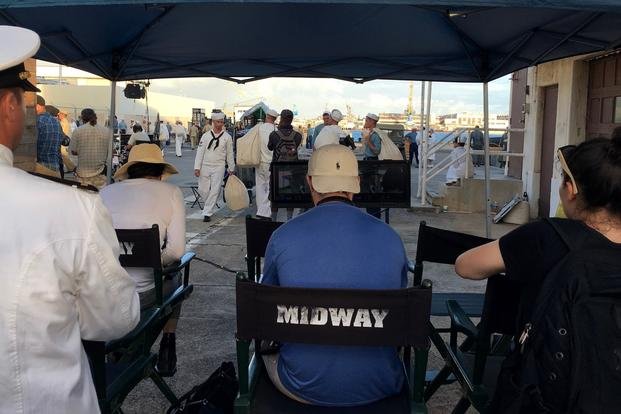
Once the Department of Defense approved a production support agreement with the movie’s producers, the writers got busy working to get the script as accurate as practicable. Multiple script drafts were provided to the Naval History and Heritage Command (NHHC). Those same historians viewed the rough and final movie productions.
The “Midway” movie writers and producers worked tirelessly with the Navy in script development and during production to keep the storyline consistent with the historic narrative. In a few small instances, some events portrayed were not completely consistent with the historical record. Revising them would have unnecessarily complicated an already ambitious retelling of a series of complicated military battles. The production was representative of what unfolded in the opening months of WWII in the Pacific and does justice to the integrity, accountably, initiative and toughness of the Sailors involved.
The naval historians who reviewed the production were impressed.
“I’m glad they did a movie about real heroes and not comic book heroes. Despite some of the ‘Hollywood’ aspects, this is still the most realistic movie about naval combat ever made and does real credit to the courage and sacrifice of those who fought in the battle, on both sides,” said the director of NHHC, retired Rear Adm. Sam Cox, who personally supported each phase of the historical review.
The commitment to getting it right matriculated to the actors honored to represent American heroes.
Harrelson as Adm. Chester Nimitz
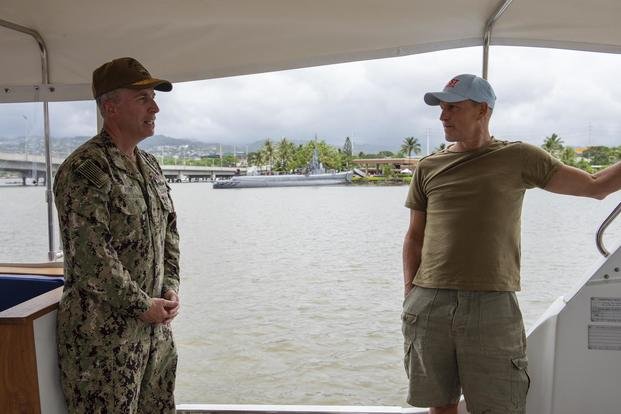
Woody Harrelson plays the role of Adm. Chester Nimitz, the U.S. Pacific Fleet commander who assumed command after the attack on Pearl Harbor, through Midway and remained in command until after the end of the war. Harrelson bears an uncanny resemblance to Nimitz in the movie.
In preparing for the role and while in Pearl Harbor, Harrelson called on Rear Adm. Brian Fort, who was (at the time) the commander of Navy Region Hawaii. Harrelson wanted to understand the decisions the fleet admiral took in those critical months, and also wanted to get a sense of the type of naval officer and man Nimitz was. Calm and understated, and renowned for his piercing blue eyes, Nimitz was a quiet, confident leader. And he demonstrated a remarkable threshold for taking calculated risks. Committing his remaining carriers to the Midway engagement was chief among them.
“Adm. Nimitz came in at an extremely difficult time for the Pacific Fleet. It was really important for Harrelson to understand not just the man, but the timing of his arrival and the urgency of the situation for the Navy and nation,” said Jim Neuman, the Navy Region Hawaii historian who arranged the meeting between Rear Adm. Fort and Harrelson. Neuman also served as the historical liaison representative on multiple sets during the filming.
Harrelson also got underway on the aircraft carrier USS John C. Stennis in August 2018 while the ship operated in the eastern Pacific Ocean. While embarked, Harrelson got a close look at air operations at sea. He observed the launching and recovery of various naval aircraft, as well as seeing the navigation bridge and other areas critical in ensuring the ship operates safely. Harrelson was also exceedingly generous with his time to interact with Sailors, stopping to talk with them, sign autographs and even played piano at an impromptu jam session.
During the visit, he saw first-hand what “Midway” depicts throughout: Navy teams work very closely together to make the impossible become possible.
The Midway battle pitted four Japanese aircraft carriers against three American carriers. Preparing, arming, launching and recovering aircraft from a ships at sea is no easy task. Adding the uncertainty and urgency of war only complicates an already highly complex operation.
Having credible combat power win the fight was only one aspect of winning Midway. Having them in the right location, at the right time, was the work of the information warfare professionals.
Wilson as Lt. Cmdr. Edwin Layton
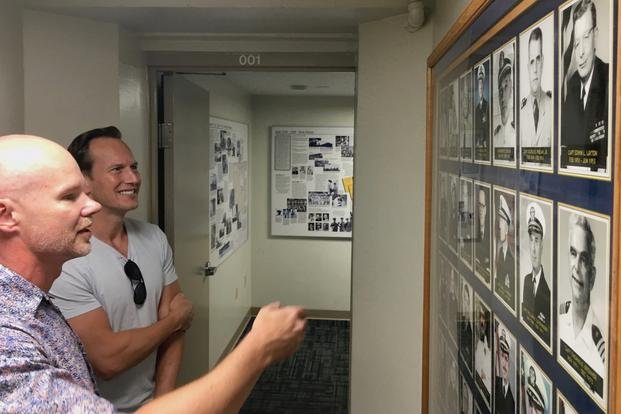
Patrick Wilson, who serves in the role of Lt. Cmdr Edwin Layton, the U.S. Pacific Fleet intelligence officer, took great care in accurately portraying his character. He called on the Pacific Fleet’s intelligence officer, just-retired Navy Capt. Dale Rielage. The two toured an unclassified area outside of the still highly-classified offices at the Pacific Fleet. The outer office space is adorned with storyboards that remind the Navy information warfare professionals there just how critical their work was in winning Midway and the war in the Pacific. Also located there is the Pacific Fleet intelligence officer portrait board – with Layton’s picture being the first in a line of dozens of officers who have served in the 75 years since.
After the brief tour, the two sat down and compared notes about Layton’s education, his experiences in Japan and elsewhere before the war, his relationship to Nimitz, and what the relationship was like between the Pacific Fleet staff and the code breakers in Station HYPO. No detail was too small, including typical protocol concerning how staff might have reacted when a senior officer such as Adm. Nimitz entered the office. Wilson’s command of Layton’s history was impressive and exhaustive, and his portrayal in the movie reflects it.
In fact, the research he and others put into the script and portrayals made “Midway” a compelling and believable representation of how information warfare professionals literally helped save the world 75 years ago. In today’s connected 21st-century information landscape, the importance of naval information warfare professionals are even more important to today’s security.
“We were thoroughly impressed with the amount of research he had conducted on his own, and it's evident he is committed to honoring Layton’s legacy. Besides that, he was a really just a good guy and earnestly interested in learning more about Layton and the history,” said Werner, who escorted Wilson during the visit to the staff.
“Midway” opens in theaters everywhere on Nov. 8.
*Article updated to better reflect screenwriter Wes Tooke's military experience.
